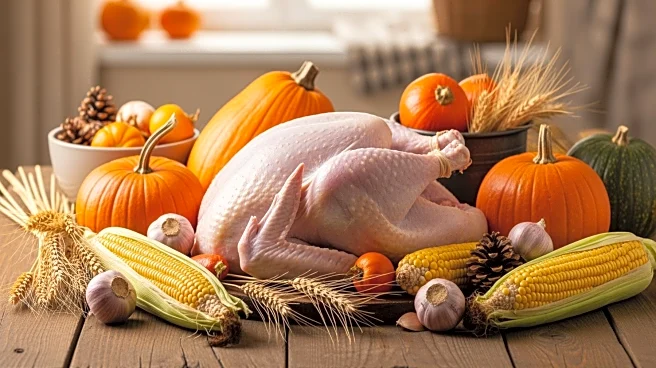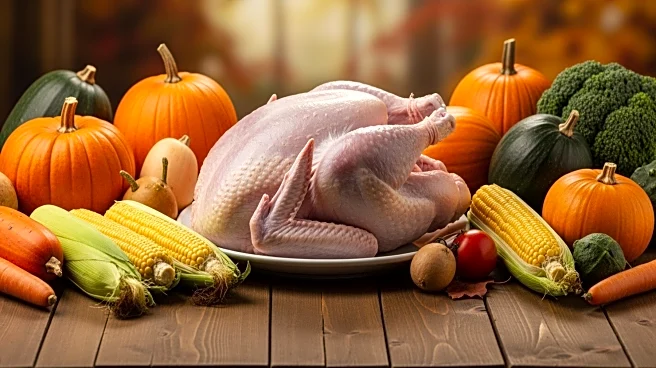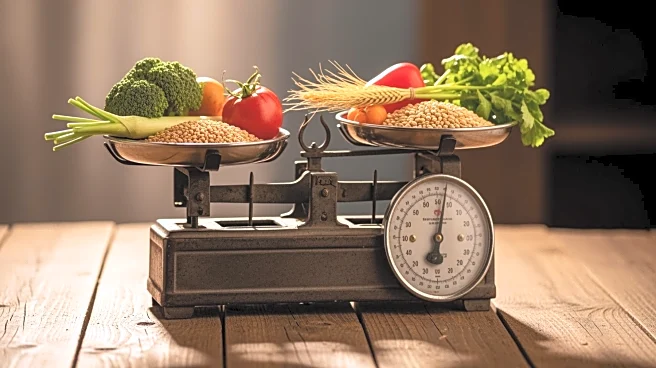What's Happening?
New data from Wells Fargo and the American Farm Bureau Federation (AFBF) indicates that the cost of a traditional Thanksgiving dinner has decreased this year, primarily due to lower turkey prices. The
average cost for a holiday meal has dropped by 3% to 6%, with turkey, dinner rolls, and stuffing leading the decline. The AFBF reports the average nationwide cost at $55.18, down 5% from last year, yet still 13% higher than pre-pandemic levels. The decrease is attributed to easing supply chain pressures and strong competition among grocers, with many retailers offering free turkey promotions and holiday meal bundles. Despite the overall decline, some side dishes remain costly due to supply shocks, such as sweet potatoes, which have increased by 37% due to adverse weather conditions in Mississippi.
Why It's Important?
The reduction in Thanksgiving dinner costs provides relief to U.S. households that have faced rising food prices in recent years. Lower turkey prices, driven by increased production and the subsiding avian flu outbreak, contribute significantly to this relief. However, the persistent inflation in side dishes highlights ongoing challenges in the agricultural sector, affecting processors and packers. The competitive discounts offered by retailers are crucial in helping families manage their holiday budgets without compromising on quality. This trend reflects broader economic dynamics, where supply chain improvements and strategic retail promotions can mitigate inflationary pressures, albeit temporarily.
What's Next?
While the current price reductions offer temporary relief, the broader inflationary pressures on food items remain a concern. Retailers may continue to leverage private-label lines and competitive promotions to attract budget-conscious consumers. The agricultural sector may need to address supply shocks affecting produce prices, potentially through improved farming practices or technological interventions. Consumers are likely to continue adapting by hosting smaller gatherings and mixing homemade with store-bought dishes. Monitoring future price trends and supply chain developments will be essential for stakeholders to anticipate and respond to ongoing economic challenges.
Beyond the Headlines
The decline in Thanksgiving dinner costs underscores the complex interplay between agricultural production, supply chain dynamics, and consumer behavior. While turkey prices have dropped, the inflation in side dishes reveals vulnerabilities in the agricultural sector, particularly in regions affected by adverse weather conditions. This situation highlights the importance of sustainable farming practices and technological innovations in mitigating supply shocks. Additionally, the reliance on competitive retail promotions reflects broader economic strategies to manage consumer spending during inflationary periods. These developments may influence long-term shifts in consumer habits and retail strategies.












